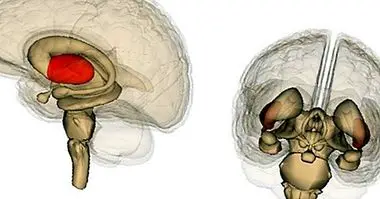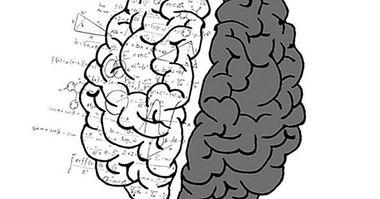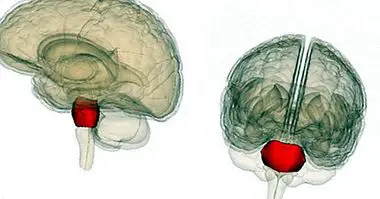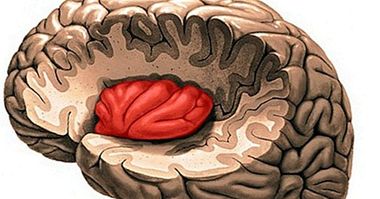Is it true that alcohol kills neurons in the brain?
One of the main and most recent objectives of neurology has been to study the toxic or harmful effects of psychotropic substances in the brain. Through different investigations it has been possible to know some of the consequences of consuming excess chemical compounds such as ethanol.
From there the belief that alcohol kills neurons has become very popular . To what extent is it true? Let's see it in the following text.
- Related article: "Alcoholism: these are the effects of dependence on drinking"
How do neurons die?
To begin we will remember briefly the life cycle of neurons and what we understand by "neuronal death". As with the different cell populations that make up our body, nerve cells (neurons) act by a mechanism of proliferation that includes cell loss, renewal and differentiation.
The death of a cell is defined as the halting of its biological processes by irreversible morphological, functional and biochemical changes that prevent it from performing its vital functions (Sánchez, 2001). It is considered, in this sense, that a neuronal death has occurred when a nerve cell loses the ability to establish adequate interstitial connections.
- You may be interested: "Parts of the human brain (and functions)"
Two major types of neuronal death
Neural death is when its characteristics are significantly modified, impeding the ability to function . And the latter does not necessarily correspond to a decrease in the volume of cells within the affected areas. Let's see now the two major types of neuronal death:
1. Apoptosis
Also known as programmed neuronal death. It has adaptive purposes, that is, it serves to maintain only the connections of most frequent use and occurs especially in the first years of development .
2. Necrosis
It consists in the loss of the functions of the neuron due to the influence of external factors. In this process the cells are not always phagocytosed (that is, they do not completely disintegrate within the organism, which can bring other medical complications), but they are considered dead because they lose the ability to be activated and to produce connections with each other.
Said the above we will see what is the toxic mechanism that produces the consumption of alcohol and if the latter has the capacity to generate a process of apoptosis or necrosis.
Toxic mechanism of frequent alcohol consumption
The toxic effects of ethanol (alcohol for recreational use) vary according to the specific region of the brain in which they act. As well They vary according to the age or stage of development, the dose and the duration of the exposures .
When it comes to the mature brain, a chronic or intense exposure to ethanol can cause different diseases, both of the central nervous system and the peripheral nervous system, as well as skeletal muscle (de la Monte and Krill, 2014).
The consequence is that, in the long term, excessive consumption of alcohol significantly alters executive functions. In other words, alcohol can produce a degenerative activity of the nervous system, as it gradually impairs the function of neurons, including neuronal survival capacity, cell migration and the structure of glial cells. Without this last means that the neurons necessarily disintegrate, yes it can imply the definitive loss of its functions, which goes into the definition of neuronal death .
This is because, among many other things, the excessive consumption of alcohol produces deficiency of thiamine, which is a vitamin B complex, essential in the conduction of nerve signals and in supplying energy to the brain.
Thiamin deficiency reduces protein levels in the thalamus and also modifies neurotransmitter levels in the hippocampus and cerebral cortex. As a consequence, it produces alterations in the special memory and increases the perseverative behavior. Likewise, some of the long-term consequences include the loss of functions necessary for plasticity and neuronal survival.
Exposure to alcohol in the peri and postnatal period
There is a large amount of scientific literature that reports several of the consequences of frequent exposure to alcohol, both in the later stages of the perinatal period and in the first years of life (period in which the human brain takes place).
It is during the early stages of postnatal development when there is an explosion of synaptogenesis, the formation of synapses or connections between neurons. Several studies agree that ethanol (which has antagonistic properties of glutamate receptors - the main excitatory neurotransmitter in the brain -), triggers a harmful and widespread process of apoptosis . This is because such antagonistic activity favors excitotoxic neurodegeneration and abnormal inhibition of neuronal activity.
To put it another way, ethanol prevents the passage of glutamate, which in turn inhibits the formation of synapses, favoring an unnecessary process of programmed neuronal death. The above has been accepted as one of the possible explanations for the reduction of brain mass and human fetal alcohol syndrome in newborns.
It is worth mentioning that neuronal immaturity, characteristic of the first years of human development, is especially sensitive to different environmental agents that can generate harmful modifications in the synaptic connections. Among these agents is ethanol, but it is not the only one, and it can also come from different emitters, often external to the pregnancy itself or to the child himself.
Some harmful effects of alcohol in the worker
According to Suzanne M. de la Monte and Jillian J. Krill (2014), the causes of brain degeneration and atrophy in people with alcoholism is continually being debated in the scientific community .
In his review on Human Neuropathology Related to Alcohol, published in the journal Acta Neuropathologica, we are told that the main tissues that the prolonged consumption of alcohol affects in the mature brain are the following: the purkinje and granular cells, and the fibers of white matter. We will briefly explain what the above consists of.
1. Decrease in white matter
The most visible and studied noxious reaction in the brain of people who have consumed alcohol in excess is the decrease in white matter. The clinical manifestations that derive from this range from subtle or undetectable deterioration, to a cognitive wear with important deficits in the executive functions . The scientific findings suggest that cortical atrophy resulting from excessive alcohol consumption is associated with a definitive loss of synapses or with significant damage to their functions.
- Perhaps you are interested: "White substance of the brain: structure and functions"
2. Granular cells and purkinje cells
The granular cells are the smallest of the brain. They are found in different parts of the cerebellum, bordering on purkinje cells, which are a type of neurons that is known as GABAergic. The latter are some of the largest neurons that have been located so far.
Among other things, they are responsible for regulating sensory and motor functions. A regular consumption of alcohol that lasts between 20 to 30 years produces a 15% reduction in Purkinje cells, while a high consumption during the same years produces 33.4% (de la Monte and Krill, 2014). The degeneration of these cells in the vermis (space that divides the two cerebral hemispheres) correlates with the development of ataxia; while its loss in the lateral lobes has been related to cognitive alterations.
In summary
In sum we can say that alcohol it can generate both temporary and permanent deterioration in the activity of nerve cells, product of important modifications in the structure of these cells and their ability to establish communication.
To a large extent the severity of the impairment depends on the duration of exposure to alcohol, as well as the age of the person and the specific area of the brain where the damage has occurred.
If the damage is permanent then it is a neuronal death, but this has only been studied in the case of people whose consumption of ethanol is not only recreational, but excessive and prolonged. Likewise, the programmed loss of neuronal activity due to exposure to alcohol during the perinatal period and in organisms with a few years of life has been studied.
In the case of excessive and prolonged consumption in adulthood, it is neuronal necrosis due to excitotoxicity; whereas in the case of exposure during peri and postnatal development it is non-adaptive apoptosis. In this sense, alcohol consumed in excess for many years, as well as very early contact with this substance, can have as a consequence the death of neurons, among other consequences harmful to health.
Bibliographic references:
- De la Monte, S. & Kril, J. (2014). Human alcohol-related neuropathology. Acta Neuropathologica, 127: 71-90.
- Creeley, C. & Olney, J. (2013). Drug-Induced Apoptosis: Mechanism by which Alcohol and Many Other Drugs Can Disrupt Brain Development. Brain Sciences, 3: 1153-1181.
- Tokuda, K., Izumi, Y., Zorumski, CF. (2011). Ethanol enhances neurosteroidogenesis in hippocampal pyramidal neurons by paradoxical NMDA receptor activation. Journal of Neuroscience, 31 (27): 1660-11.
- Feldstein, A. & Gores, G. (2005). Apoptosis in alcoholic and nonalcoholic steatohepatitis. Frontiers in Bioscience, 10: 3093-3099.
- He, J., Nixon, K., Shetty, A. & Crews, F. (2005). Chronic alcohol exposure reduces hippocampal neurogenesis and dendritic growth of newborn neurons. European Journal of Neuroscience, 21 (10): 2711-2720.
- Olney, J. (2002). New Insights and New Issues in Developmental Neurotoxicology. NeuroToxicology, 23 (6): 659-668.
- Goodlett, C. & Horn, K. (2001). Mechanisms of Alcohol-Induced Damage to the Developing Nervous System. Alcohol Research and Health. 25 (3): 175-184.
- Sánchez, V. (2001). Regulatory mechanisms of non-necrotic cell death. Cuban Journal of Biomedical Research, 20 (4): 266-274.



















